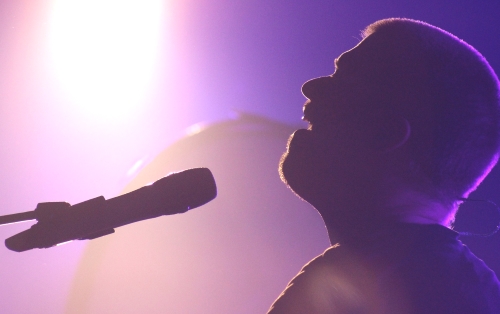Many worship venues have made the transition from “wedges” to “ears” for stage monitoring purposes, and often find that this can be a surprisingly tricky process.
Essentially, wedges are loudspeakers that are laid sideways and angled up at the performers. The sound content or “mix” in each monitor, or group of monitors, is customized for the performers’ needs and each often have a much different balance than the house sound mix.
In-ear monitor systems have become popular in recent years. This places earphones in the ear of the performer, mostly sealing the ear (both generic fit and custom molded models are common). They may be mixed from the front-of-house console, a dedicated monitor console, a personal on-stage mixer, or a wireless computer or tablet. Regardless of the type of delivery or mixing system, monitoring earphones (either wired or wireless) usually eliminate the need for a monitor loudspeaker “wedge.”
There are a number of advantages to in-ear monitoring including: lower stage volume (no open wedges blaring, better house sound, greater gain-before-feedback), artist mobility (no sweet spot to stand in as with most wedges), hopefully lower monitoring levels for increased hearing safety, the ability to listen deeper into the monitor mix details, a custom mix and loudness for each user, a discreet path for talkback to the user’s ears, system portability (wedges weigh a whole lot more than earphones), aesthetics, and acoustic isolation.
Those last two points may be argued as disadvantages too, but most users agree that earphones are visually less distracting than wedge monitors. Read on for more regarding the acoustic isolation.
Worship leaders and techs transitioning to in-ear monitoring should plan for increased communication and expect to spend more time building the right monitor mix. The acoustic isolation (occlusion effect) of in-ear monitoring offers extreme control, but also requires more attention to detail. But before going further into that, let’s think a bit about human hearing and stage monitoring. Consider this scenario:
A worship leader is downstage center with a single wedge monitor and his guitar and vocal mic. The tech mixes both signals into the wedge plus any other signals the WL requests, which might include other instruments. He monitors comfortably. Does he monitor in mono or stereo?
Well, it is true that a single wedge monitor reproduces a mono audio signal, but is that all he hears? No. He not only hears the sound from the wedge, but also the sounds from all around him including other performers, audience sounds, room reverberation, and more. He hears all these things with a true sense of space and dimension. Humans hear binaurally. Next, consider this scenario:
A church buys its first wireless personal monitoring system to replace the worship leader’s wedge. The sound tech removes the wedge and routes the regular monitor signal to the in ear monitor system, whether wireless or wired (mixed from FOH). At sound check the WL puts his new earphones in and soon says, “My mix is different!” The tech responds, “Nope, it’s the same mix you’ve always had.” Who’s right?
They both are. With the wedge, the WL heard the monitor signal and his acoustic surroundings as an integrated listening experience, with both ears open. Now that his ears are essentially plugged by earphones, he hears only the monitor signal provided in them, and does not hear his acoustic surroundings. He relies nearly 100 percent on the mix he receives.
So, the WL is correct that he’s hearing a different balance than before, and the audio operator is correct in the sense that he’s feeding the same old monitor mix to the WL. The difference is the delivery method, with its DRAMATICALLY different acoustic experience. For this reason, the transition can be startling and potentially frustrating for new in-ear monitor users.
Professional earphones for stage monitoring are designed to seal the ear, acoustically isolating the user from nearby sounds. When people with normal hearing close off the opening to the ear canal, things change big time. Occlusion/isolation is a big deal, but so is the way that the user hears their own voice via bone conduction (vibration of the bones in the head).




















